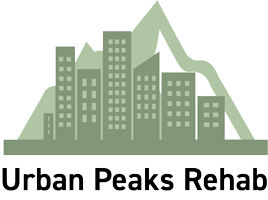Pain can be a tricky thing to navigate, especially if you are in recovery from an opioid use disorder. There are many ways to handle physical pain without the use of opioids, and it is important to know what options are available, how to manage pain levels in recovery, and homeopathic remedies to ease the stress of chronic pain. SMART Recovery’s website offers alternative paths to pain management below:
Natural Pain Remedies:
- Massage, acupuncture, and chiropractic care – Alternative therapies focused on the body, such as acupuncture, acupressure, and spinal manipulation, are safe and natural mechanisms for coping with pain. Not only are these methods used to ease pain, they also have been known to release dopamine-stimulating endorphins and improve body function.
- Exercise – Exercise is always recommended, yes, but it is particularly important for those who experience chronic pain. Studies show that mild, low-impact exercise can greatly improve functionality and mobility in a person. And, exercises such as yoga have proved to relieve chronic back pain, joint pain, arthritis, fibromyalgia, and other related conditions. If you are not likely to exercise on your own, you may consider scheduling physical therapy sessions for ongoing pain management.
- Mindfulness and meditation – Meditation, not medication. Mindfulness (a meditational practice that focuses on self-acceptance) is an effective alternative to traditional painkilling drugs. This approach helps individuals spend less time thinking or worrying about their pain, and more time accepting the pain in efforts to reduce its intensity. Don’t believe it? A recent study of adults with chronic back pain revealed that, over the course of 26 weeks, mindfulness treatments actually resulted in great improvements in back pain and functionality. (To learn more about Mindfulness and how to apply the practice, please see this SMART Recovery blog post on the topic.
- Cognitive Behavioral Therapy (CBT) – Chronic pain can bring about emotional as well as physical tolls on the mind and body. You may know this firsthand, how relentless and extreme the pain can be, how hopeless it can make you feel. This is normal, and is exactly what CBT aims to address. Cognitive behavioral therapy is an effective, psychological treatment alternative that alleviates the dysfunctional thoughts and attitudes so often associated with chronic pain, like depression. CBT teaches coping mechanisms for pain management by helping individuals recognize symptoms, control their perceptions of pain, put their focuses elsewhere, and develop strategies to adapt and conquer any negative feelings.
And what can someone with chronic pain do in order to manage their pain in recovery? American Addiction Centers’ website focuses on daily things one can do in order to maintain a manageable pain level.
Tips for Managing Chronic Pain in Recovery
People who suffer from chronic pain and are in recovery for opioid addiction still need tools for managing pain that are not medication-based. Holistic, alternative, and adjunct methods as well as therapy and counseling are highly beneficial for both physical and emotional support.
There are some things a person can do to manage chronic pain while in recovery. These include:
- Get good quality sleep. Sleep improves mental functioning and can help the body to heal. Having a healthy sleep schedule and structured routine promotes good sleep.
- Eat nutritious and balanced meals. Stick with foods that are rich in nutrients, high in protein, and low in refined sugars and saturated fats. Providing your body with the building blocks necessary for healing is essential in managing physical health and emotional wellbeing.
- Improve communication and avoid isolating behaviors. Talking and engaging with friends and family can improve moods and relieve stress and tension.
- Attend therapy and counseling Communication and new life skills for managing pain and keeping emotional balance are fostered in therapy.
- Build problem-solving skills.Work toward solutions with a growth mindset. This can be empowering and help in many facets of life.
- Participate in something meaningful. Helping others and volunteering can improve a person’s mental outlook and sense of purpose.
- Find a creative outlet. Art, music, journaling, and more can help to keep the mind occupied and provide a respite from pain.
- Keep up with physical fitness. Physical therapy and healthy amounts of exercise can improve self-esteem, blood flow, and help to restore the body.
- Engage in relaxation techniques. Yoga, breathing exercises, and mindfulness mediation are all helpful in reducing physical and emotional tension.
- Join a support group. Peer support and a healthy social network can be highly beneficial in minimizing relapse and offering helpful coping strategies and tools.
There may be times where someone in recovery for opioid addiction needs to take pain medication despite efforts to avoid it. Non-opioid and non-psychotropic drugs are generally preferred to treat pain in these cases. There are several different types of medications on the market today that are less addictive than opioid drugs that may be useful in managing different types of pain.
Pain medications should be used on an as-needed basis and under the careful and direct supervision of a highly trained healthcare provider who is well versed in the history of the individual. There should be no secrets surrounding medications. The individual in recovery needs to be sure that roommates, spouses, mentors, and substance abuse treatment providers are all aware of what medications are being taken, the proper dosages, and the amount of time they will need to be taken for. Close monitoring and holding oneself accountable are vital in helping to minimize potential relapse.
The pain needs to be treated, but with as low and few of doses of medications as possible. Addiction treatment specialists, mental health providers, and medical professionals need to all work together to ensure that both chronic pain and addiction are properly managed in order to promote a sustained recovery.
